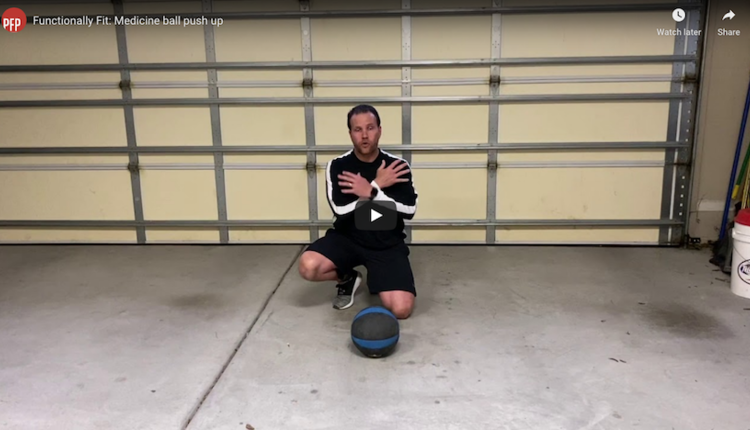
Improving shoulder strength/stability along with pillar stability is essential for injury prevention and optimal movement. Using a medicine ball with the traditional push-up adds an element of instability and difficulty that will challenge clients to maintain body control. This is part two of my stay-at-home COVID 19 garage exercise series.

Execution: Place your hands on top of the medicine ball with the tip of the thumbs together and the hands along the sides of the med ball. Begin in a tall plank position with the elbows straight and the feet at least shoulder-width apart. Perform a slow controlled push-up, pause at the bottom for 1-2 seconds and return to the start position. Perform 2-3 sets of 10-15 repetitions. I suggest a cadence of 2/1/1 or even 2/2/1.

Regression: Perform the exercise on the knees. This is often a great place to begin for the client with limited upper body strength or poor stability. This may also be helpful if the client complains of any wrist pain or feels weak/unstable.
Progressions:
1. Increase the cadence of the exercise
2. Move the feet closer together (reduce the base of support)
Application: This exercise will promote upper-body strength and core strength/stability as well as enhance dynamic shoulder stability. It targets the chest, triceps and deltoids specifically, but with a narrow base of support, the torso will be challenged to resist rotation as well as extension.
Additional notes: This exercise may be contraindicated if there is a history of shoulder instability or active shoulder, elbow or wrist pathology.















